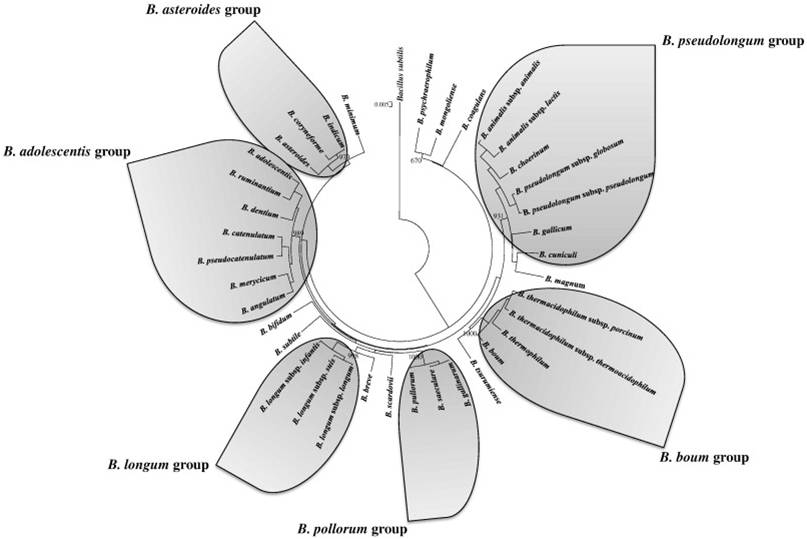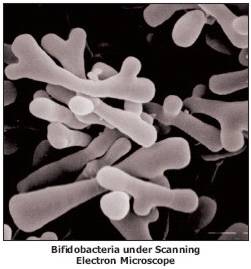Bifidobacterium choerinum
A Microbial Biorealm page on Bifidobacterium choerinum
Classification
Higher Order Taxa
Bacteria; Actinobacteria; Actinobacteridae; Bifidobacteriales; Bifidobacteriaceae; Bifidobacterium choerinum
Species
Species of the Genus Bifidobacterium include: B. adolescentis;B. angulatum;B. animalis; B. asteroids; B. bifidum; B. boum;B. breve;B. catenulatum; B. choerinum; B. coryneforme;B. cuniculi;B. denticolens; B. dentium; B. gallicum; B. gallinarum; B. indicum;B. infantis;B. inopinatum;B. lactis;B. longum;B. magnum;B. merycicum;B. minimum;B. pseudocatenulatum;B. pseudolongum;B. pullorum;B. ruminantium; B. saeculare; B. subtile; B. suis;B. thermacidophilum;B. thermophilum.
Description and Significance
Bifidobacterium choerinum is an autochthonous bifidobacterium species of the pig that is well adapted to the gut of pre-weaned piglets and shows potential probiotic properties (2).
Genome Structure
Bifidobacterium chromosomes are circular shape.
Cell and Colony Structure
Bifidobacteria choerinum is a Gram-positive, anaerobic, branched rod-shaped bacterium. It is 10-12 μm and has a V or Y-like appearance. This bacterium has a hydropobic character of bifidobacterium surface (3). Bifidobacterium accumulate iron when it is presented in the ferrous oxidation state. This form is expected under anaerobic conditions like the human colon or cattle rumen (3).
Metabolism
Bifidobacterium have been known to synthesize vitamins. It is an anaerobic microbe best grown at 37°C. Significant amounts of polysaccharides normally galactose and glucose often associated with rhamnose (3). This bacterium is not considered to reduce nitrate (3). It also will not develop in the presence of CO2. When residing in the intestines, they are able to ferment sugars to produce lactic acid. It has also been shown to be resistant to aminoglycoside antibiotics while being susceptible to Beta-lactams (3).
Ecology
Pathology
Bifidobacterium choerinum are non-pathogenic.


